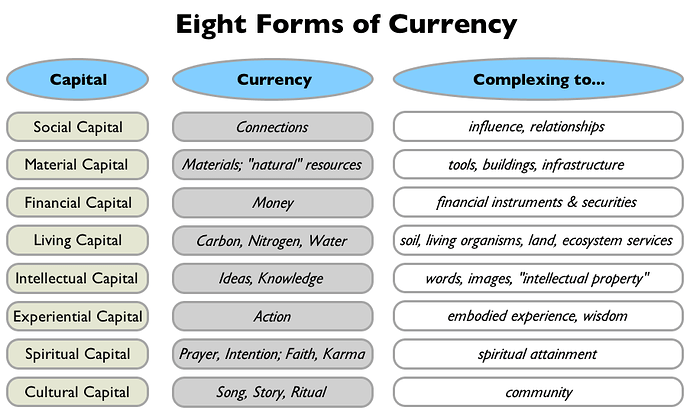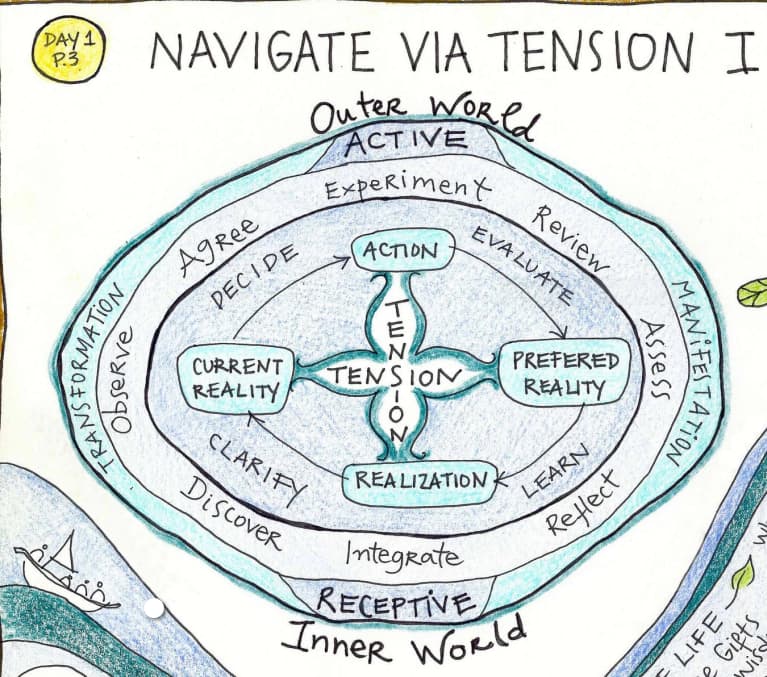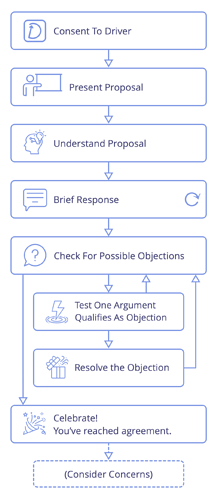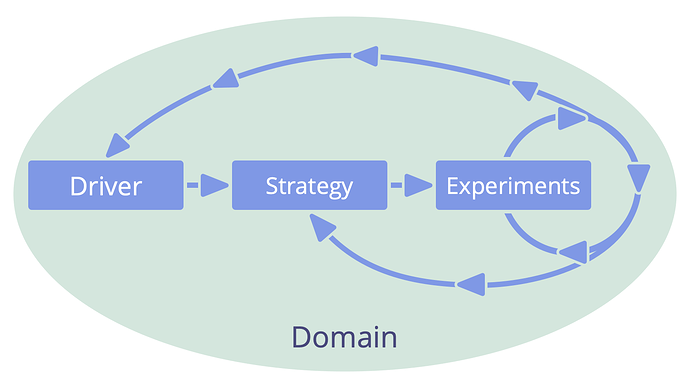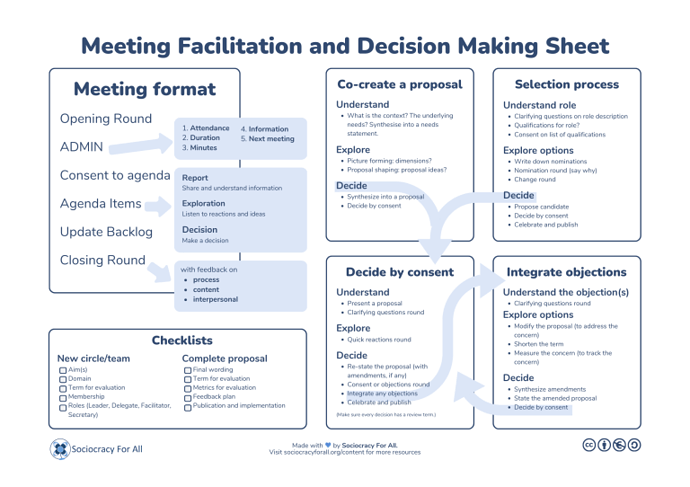What is Sociocracy?
The literal meaning of the term sociocracy is “rule of the companions”: socio — from Latin socius — means “companion”, or “friend”, and the suffix -cracy — from Ancient Greek κράτος (krátos) — means “power”, or “rule”.
Sociocracy, or dynamic governance, is a social technology which seeks to optimise organisational effectiveness and hold everyone’s voice as equal or equivalent. It is inspired by natural systems.
Sociocracy is an elegant whole system approach for development and evolution of harmonious, adaptable organizations.
It draws on the collective intelligence of the group and fosters accountability and sense of ownership.
Sociocracy’s Three Values:
- Equivalence — everyone has a voice in decisions that affect them.
- Transparency — policy decisions are known to everyone through the double-links.
- Effectiveness — are we effective in achieving our aims, respecting people and resources, being responsive to change.
Sociocracy Governance Principles
Decision-making by consent
- The organization and its circles create agreements and decide on agenda items on meetings using consent decision making.
- There is consent to an agreement proposal when no member of the circle has an objection.
- An objection means a circle member has reason to assume that the circle cannot achieve its purpose, aim or driver adequately if the circle approves the proposal.
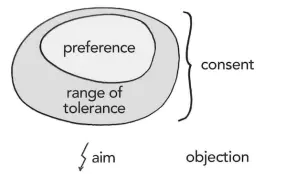
- Making decisions that are good enough for now and safe enough to try
- Objections are gifts: they reveal wisdom seaking emergence
- Following the principle of equivalence, decision making makes use of Rounds, The intention is to hear all voices and contribute to more mutual listening and understanding.
- Those affected decide.
- Consent is not consensus
In sociocracy, to object to a proposal means: “if this proposal goes through my work towards the realisation of the circle’s aim and purpose is compromised or impeded”. Objections in sociocracy must be ‘paramount’ and ‘reasoned’. ‘Paramount’ means that they must be related to the circle’s work and purpose. ‘Reasoned’ means that they need to be in the form of a rational, sensible, intelligible argument understood by others.
Objections are not seen as roadblocks and obstacles. Objecting essentially means: “I want to work effectively and this proposal will negatively affect my work so we need to figure out how to make this proposal better”. Objections are not negative. They are seen as positive and constructive; they say ‘yes to working’. Our aim as a group is that a proposal is good enough so that everyone can work.
Objections are encouraged in sociocracy. Facilitators are encouraged to be alert to the reservations, hesitations, doubts, niggles, uncertainties, discomfort expressed by circle members in verbal and non-verbal ways. Facilitators are encouraged to ‘harvest’ objections actively and not to disregard any signs that people may harbour silent reservations.
Further reading:
SoFA - Consent Decision Making
SoFA - Strategies for integrating objections
SoFA - On rounds in Sociocracy
Organization Structure in Circles
- Small groups called circles are the basis of everything.
- Circles have a defined purpose, driver or aim (= a description of what the circle is doing) and full authority in a domain (= what the circle has authority over).
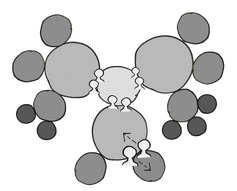
- Circles make decisions about everything within their domain and other circles cannot interfere unless their own work is somehow affected by the activities of the other circles.
- Circles are integrated by roles to help coordinate and achieve the circle’s purpose. The following are suggested process roles that can help the Circle organize by following recommended practices: Circle Leader / Coordinator, Delegate/Representative, Circle Administrator, Facilitator, Operational Roles.
- Double linking helps distribute power
Further reading:
SociocracyFofAll - Circles in sociocracy: an effective organizational structure
SociocracyFofAll - Clarity and empowerment: What is a domain?
SociocracyFofAll - Vision, Mission, and Aims in Sociocracy
SociocracyForAll - How to design a new circle structure (for an existing organization)
SociocracyForAll - Circle Roles
Continuous improvement
- The organization as a whole and each circle in particular is committed to ongoing feedback and continual learning about governance, communication, and the content of the circle’s work.
- A set of practices supports the general commitment for continuous improvement of the organization. Examples are performance reviews, meeting evaluations ,or a requirement to set review dates for agreements. The intention is for these agreements to be lived and maintained well.
- Leadership (i.e. sensing, steering, and evaluating) as a distributed process throughout the organisation rather than concentrated in certain roles or titles
- Circles use feedback systems (measuring and evaluation) to assess to what extent they have moved forwards (or backwards) in fulfilling the circle aim
Further reading:
SoFA - On interpersonal feedback
SoFA - Intentional feedback in organizations
Concepts
Driver
Driver is a situation that motivates action. It includes what is happening and what is needed. Can be seen as “The art of stating the obvious”.
When qualifying a driver, ask the question: Would it help the organization if we respond to this driver? Or would it lead to unintended consequences if we don’t?
A driver can be composed of these parts:
- Current situation
- Effect of the situation
- The need of the organization in relation to this situation
- The impact of attending to that need
Further reading:
Sociocracy3.0 - Describe Organizational Drivers
Domain
A statement of what they are responsible for and have authority over
Domains are held collectively as a circle for making policy decisions. But we can also give smaller parts of our circle domain to one person in a role.
It represents a distinct area of influence, control and decision making of a specific role or circle. (Read more)
Agreement
An agreement is designed to guide the flow of value and can be of different types:
- Structure: A circle, role or working group.
- Policy: What is allowed? What is not?
- Project: Commit resources or approve action for a project initiative championed by a peer or team.
- Action: something you want to do but does not qualify as project and want to receive approval through governance
- Land node: create an agreement of benefit, responsibilities and value exchange between a land project and the Diamante Bridge Collective.
- Memorandum of understanding: expresses a convergence of will between the DBC and another organization. It is not legally binding and any party can leave the agreement if disagrees with the terms or wants to withdraw.
Agreements are created in response to organizational drivers or aims, and are regularly reviewed and evolved as necessary.
Accountability for an agreement lies with the people that make them.
An agreement can include delegation of specific responsibilities to individuals or groups.
Purpose:
It clarifies the identity and intention of a role or circle. The purpose orients the action of a role or circle even without any other explicit accountabilities, domains or policies. It relates to the difference it wants to make. It can be a capacity, potential, or goal that the Role or Circle will pursue or express. It answers “Why does this role or circle exist?”
Aim
Aims are concrete descriptions of things that we can act on that contributes to the circle’s or organization’s Mission or Purpose. It answers the “what” and can be products, services, experiences, transformation, etc.
A simple prompt to find an organization’s aim is to ask: why does your organization exist? Typically, people’s response will be their purpose: “Because we want to raise awareness about climate change.” How we’re going to do that can be expressed in a “by”-phrase. Example: “We want to raise awareness about climate change by conducting science projects that explore climate science with elementary students.” The by-phrase gives you the aim.
Aims are specific ongoing, continuing objectives for organizing and accomplishing the circle’s tasks. Aims are what the circle produces or provides the community.
SoFA - Vision, Mission, and Aims in Sociocracy
Proposal
The action of bringing the intention of creating a new agreement or evolving an existing one, and driving it through the collective governance so it becomes a collective agreement.
A proposal goes through the following flow and becomes an Active Agreement if consented by the concerned circle, working group or role.
Value Flows
The value that is created towards fulfilling the organization/circle/role’s aim, purpose or its accountabilities. Or it can also be resources or capital needed to perform a project, role or circle.
Value can be of the different capital types:
Further reading:
AppleSeed Permaculture - 8 Forms of Capital
Sociocracy 3.0 - Align Flow
Patterns
Sense-making and Decision-making
Navigate via Tension
Challenges and opportunities for an organization are revealed by people bringing awareness to the reasons why they experience tension.
A tension is a personal experience: a symptom of dissonance between an individual’s perception of a situation and their expectations or preferences.
To discover drivers, investigate what stimulates tension and describe what’s happening and what’s needed. Sometimes an inquiry reveals misconceptions and the tension goes away.
Consent Decision Making process
Proposals become agreements when they are considered good enough for now and safe enough to try until the next review. Objections prevent proposals from becoming agreements, but concerns do not.
Not all arguments raised are objections, but they might reveal concerns:
A concern is an assumption that cannot (for now at least) be backed up by reasoning or enough evidence to prove its relevance or validity to those who are considering it.
Further reading:
Sociocracy3.0 - Consent Decision-Making
Test and Resolve Objections
Integrate objections and develop the proposal further
- The group has an open discussion, using everyone’s contributions to modify and improve the proposal.
- Everyone can provide solutions, with the aim of resolving the objection being dealt with.
- The facilitator should check whether the objections are really objections. If in doubt, you can ask the group:
- “Do you think this argument is an objection? Or is it a preference? If we adopt the proposal, will it harm the group, the project? Can you live with this proposal?”
- The facilitator can ask “How would you solve this problem?”
- The facilitator can divide the group in subgroups of 2 or 3 people to encourage a brief dialogue, followed by coming back to the plenary with new ideas.
- If a solution removes a person’s objection, that person shall inform the group.
- If it turns out that the proposal is not relevant, it can be withdrawn (by the facilitator or proposer) > process starts again at 2.
- If objections cannot be resolved during the meeting (for example, if information is missing, the hypothesis needs to be checked further), the facilitator asks the team/person who created the proposal to rework it. It is a good idea to include the person who raised the objection. > The process starts again at 2.
Further reading:
Sociocracy3.0 - Resolve Objections
Evolve Agreements
Continuously evolve the body of agreements, and eliminate waste.
Evaluating agreements can be as simple as checking that an agreement is still relevant, and there is no objection to keeping it as it is.
Through evaluation and strategy development, a tension can result in evolving current agreements (definitions of domain, intended outcome, circle/role’s purpose/drivers/aim, etc).
Benefit of constantly reviewing agreements:
- adapt agreements to suit changing context
- integrate learning to make them more effective
Short Format
- How has this agreement helped us?
- Is there any reason to drop this agreement?
- How can this agreement be improved?
- Agree on a next review date.
Further reading:
Sociocracy 3.0 - Evaluate And Evolve Agreements
Evolving Organizations
Strategy
A strategy is a high level approach for how people will create value to successfully account for a circle, domain or role.
It is usually more effective if a team or role keeper lead in developing their own strategy.
A strategy often includes a description of the intended outcome of implementing that strategy.
When a role/circle/working group defines its strategy, it is valuable for the broader circle or general circle to review the strategy to check for potential impediments and suggest ways it could be improved.
A strategy is a shared agreement between the delegator (broader circle or whole organization) and delegatees (circle or role) that is regularly reviewed and updated as necessary (pivot or persevere).
Further reading:
Sociocracy 3.0 - Clarify and Develop Strategy
Peer Development
Growth Buddy
- A Growth Buddy Session is a safe space between a role holder and his/her Growth Buddy where both have a brief conversation and reflect on the role holder’s contributions, challenges, lessons and opportunities of the role holder.
- This can be used as an opportunity to provide peer feedback, and orient the role holder on what is making positive impact and what are opportunities of growth for his/her self-development and impact on the collective.
- Feedback is meant to be non-judgmental and given in a spirit of open exploration, love, acceptance and connection. Efficient feedback facilitates growth and enables people to align what the organization needs with what energizes them. The conversation can extend to include a wider exploration of the person’s hopes, fears and sense of purpose in life.
- In a Growth Buddy session, the role holder is encouraged to be responsible for his/her own process of self–awareness and personal development.
- Then a summary and enumeration of important contributions are written by the role holder and posted on the forum.
Possible reflections for Growth Buddy session:
- What did you accomplish that gave you the most pleasure?
- What is the most important blockage that is an obstacle to the most impact you could create?
- To what DBC mission you feel more aligned and motivated to contribute to?
- Do you feel in tune with your life purpose as you participate in the DBC?
- Present Domain and Strategy
- Collect appreciations (eg: value, collaboration, responsibilities, competencies, domain and strategy)
- Collect improvement suggestions
Further reading:
Reinventing Organizations Wiki - Feedback and Performance Management
Reinventing Organizations Wiki - Wholeness
Sociocracy 3.0 - Peer Review
Building Organizations
Circle
A circle is a self-governing and semi-autonomous team of equivalent people who collaborate to account for a domain.
- may be permanent or temporary
- may be self-organizing
- is responsible for its own development and its body of agreements
- semi-autonomous:
-
self-governing:
- A circle’s members continuously decide together what to do to account for their domain, and set constraints on how and when things will be done.
-
equivalence of circle members:
- All members of a circle are equally accountable for governance of the circle’s domain.
Possible components of a circle:
- Purpose/Driver/Aims
- Domain definition
- Members
- Strategy
- Budget/Treasury policy
- Operations backlog
- Governance logbook (agreements)
- Value flow maps
Further reading:
Sociocracy 3.0 - Circle
SociocracyForAll - Circles in sociocracy: an effective organizational structure
SociocracyForAll - How to design a new circle structure (for an existing organization)
Role
A role is an area of responsibility (a domain) that is delegated to an individual (the role keeper), who has autonomy to decide and act within the constraints of the role’s domain.
The role keeper leads in creating a strategy for how they will account for their domain. They evolve their strategy in collaboration with the delegator.
A role is a simple way for an organization (or team) to delegate recurring tasks or a specific area of work and decision-making to one of its members.
- people can take responsibility for more than one role
- instead of formally setting up a new team, it’s sometimes simpler to just share one role between several people
- role keepers are selected by consent and for a limited term
- peers support one another to develop in the roles they keep
Circle process roles
Circle lead / Coordinator / Down link
- steward operations of the Circle
- communicate the interests and decisions of the Circle’s broader Circle.
- Acts proactively in support of the Circle’s effectiveness.
- Makes time-sensitive operational decisions within scope of Circle’s domain and policy.
Part of the operational leadership is to hold the processes and to pay attention to the whole of the circle. What needs doing next? Are circle members doing what they agreed to do? Who needs a check-in, and what might be needed so operations can run more smoothly? What comes from a broader circle that needs to happen here?
Representative / Down link
- Stand for the interests of represented team in another team.
- Transmits the news, ideas, suggestions, needs, requests, proposals from the specific circle to the general circle.
- Ensures that decisions from other circles take into account the needs of its circle if it could be affected by such decisions.
- Participate in the governance decision making of the team they link with, and can: raise items for the agenda ; participate in forming proposals ; raise objections to proposals and existing agreements.
Circle Admin / Secretary
- Each circle selects a secretary to take notes and publish the minutes within the organization.
- Might also involve announcing circle meetings, preparing the agenda in consultation with other circle members, and distributing study materials and proposals.
- As the keeper of the records, the secretary interprets policies when questions arise.
Facilitator
- The facilitator will prepare the meeting agenda and guide the circle through all the steps of decision-making.
- Ensures meetings stay on track and are evaluated
- Often invites others to facilitate some agenda items
Further reading:
Sociocracy 3.0 - Role
SociocracyForAll - Circle Roles (process roles)
Meeting practices
Meeting Format
Depending on the way your meetings are set up, circle meetings can either contain only policy or governance decisions, or it can mix operational and policy decisions. The sociocratic meeting format provides structure to help you do both.
Possible steps in meeting:
- Check-in
- Agenda building
- Topics: Report, Exploration or Decisions
- Backlog review
- Meeting evaluation
Further reading:
SociocracyForAll - The sociocratic meeting format
Review history
Version 0.81 5/4/2023
- Divided Concepts and Patterns into categories
- Other format fixes
Version 0.8 4/16/2023 - Initial version requesting for comments
